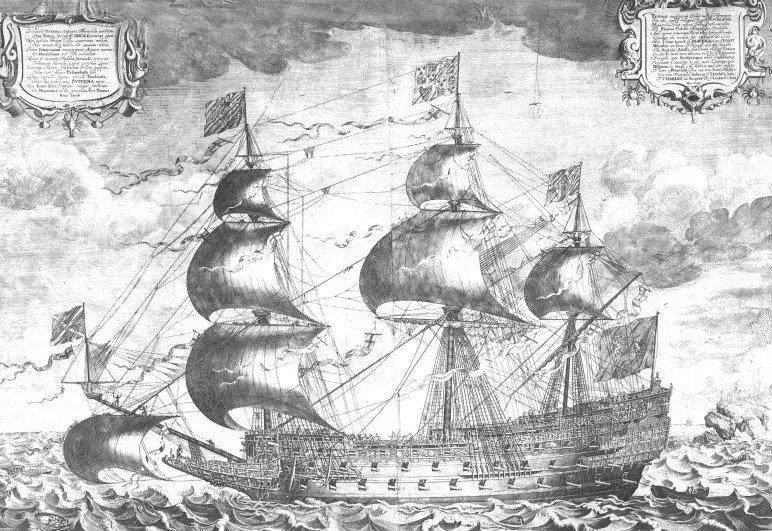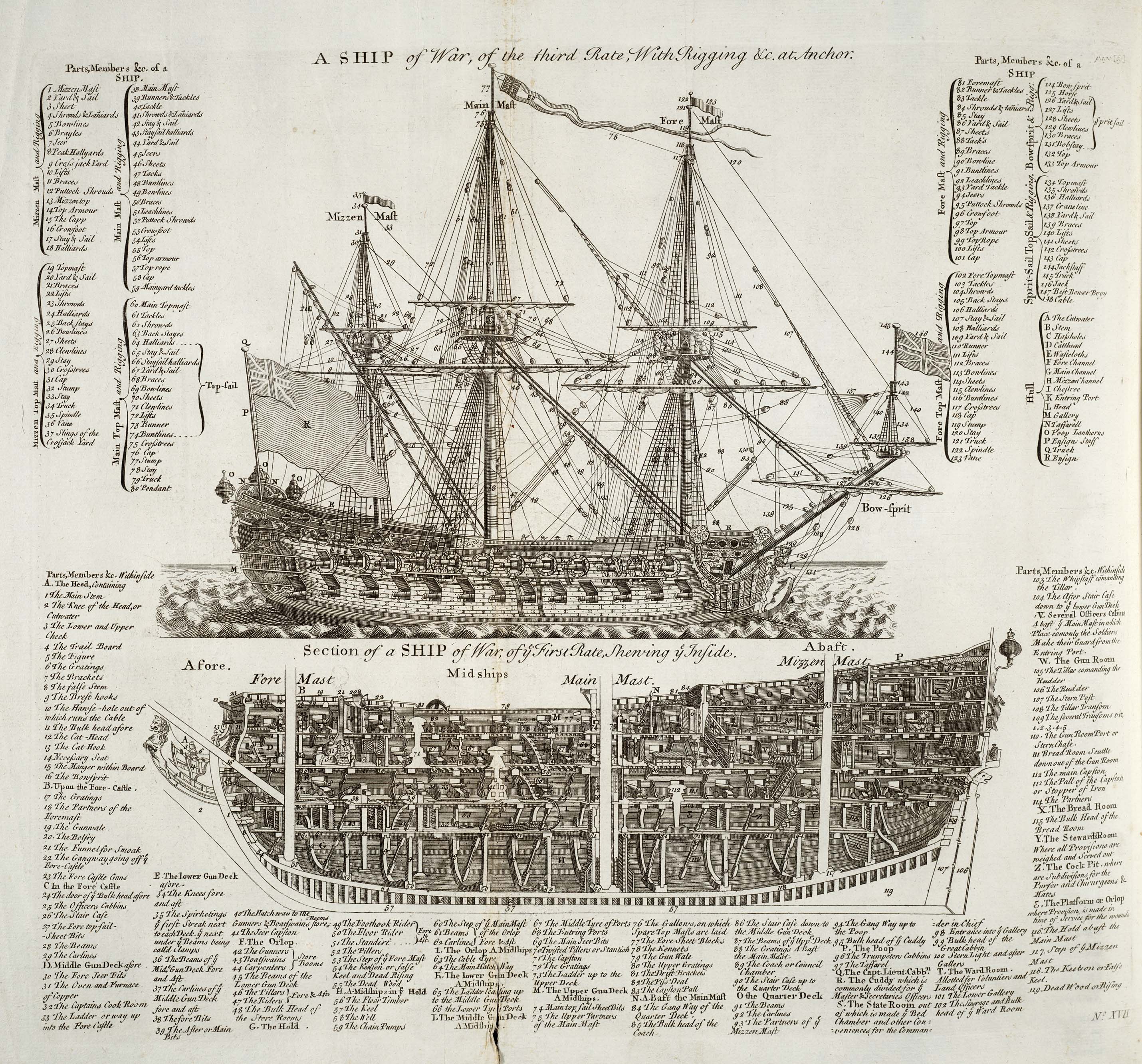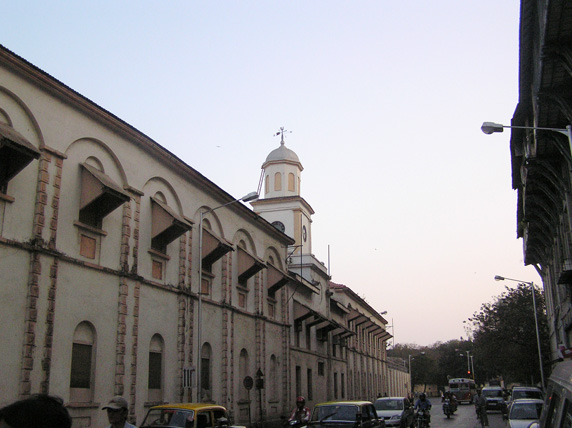|
Canopus-class Ship Of The Line
The ''Canopus''-class ships of the line were a class of nine 84-gun two-deck second rates of the Royal Navy. Their design was based on an enlarged version of the lines of the captured French ship ''Franklin'', since commissioned in the Royal Navy as HMS ''Canopus'', although this ship herself was not included as a member of the class. The earlier ships were initially ordered as 80-gun third rates, but this classification was altered by changes in the rating system in February 1817. This class of ships is sometimes referred to as the ''Formidable'' class. Ships * :Builder: Chatham Dockyard :Ordered: 8 May 1815 :Launched: 19 May 1825 :Fate: Sold, 1906 * :Builder: Bombay Dockyard :Ordered: 4 June 1816 :Launched: 10 November 1821 :Fate: Sold, 1929 * :Builder: Bombay Dockyard :Ordered: 22 April 1819 :Launched: 19 January 1824 :Fate: Sold, 1908 * :Builder: Pembroke Dockyard :Ordered: 23 January 1817 :Launched: 27 July 1824 :Fate: Sold, 1897 * :Builder: Chatham Dockyard : ... [...More Info...] [...Related Items...] OR: [Wikipedia] [Google] [Baidu] |
Ship Of The Line
A ship of the line was a type of naval warship constructed during the Age of Sail from the 17th century to the mid-19th century. The ship of the line was designed for the naval tactics in the Age of Sail, naval tactic known as the line of battle, which involved the two columns of opposing warships manoeuvering to volley fire with the naval cannon, cannons along their Broadside (naval), broadsides. In conflicts where opposing ships were both able to fire from their broadsides, the faction with more cannons firingand therefore more firepowertypically had an advantage. From the end of the 1840s, the introduction of steam engine, steam power brought less dependence on the wind in battle and led to the construction of propeller, screw-driven wooden-hulled ships of the line; a number of purely sail-powered ships were converted to this propulsion mechanism. However, the rise of the ironclad warship, ironclad frigate, starting in 1859, made steam-assisted ships of the line obsolete. The ... [...More Info...] [...Related Items...] OR: [Wikipedia] [Google] [Baidu] |
Carronade
A carronade is a short, smoothbore, cast-iron cannon which was used by the Royal Navy. It was first produced by the Carron Company, an ironworks in Falkirk, Scotland, and was used from the last quarter of the 18th century to the mid-19th century. Its main function was to serve as a powerful, short-range, anti-ship and anti-crew weapon. The technology behind the carronade was greater dimensional precision, with the shot fitting more closely in the barrel, thus transmitting more of the propellant charge's energy to the projectile, allowing a lighter gun using less gunpowder to be effective. Carronades were initially found to be very successful, but they eventually disappeared as naval artillery advanced, with the introduction of rifling and consequent change in the shape of the projectile, exploding shells replacing solid shot, and naval engagements being fought at longer ranges. History The carronade was designed as a short-range naval weapon with a low muzzle velocity f ... [...More Info...] [...Related Items...] OR: [Wikipedia] [Google] [Baidu] |
Ships Of The Line
A ship of the line was a type of naval warship constructed during the Age of Sail from the 17th century to the mid-19th century. The ship of the line was designed for the naval tactic known as the line of battle, which involved the two columns of opposing warships manoeuvering to volley fire with the cannons along their broadsides. In conflicts where opposing ships were both able to fire from their broadsides, the faction with more cannons firingand therefore more firepowertypically had an advantage. From the end of the 1840s, the introduction of steam power brought less dependence on the wind in battle and led to the construction of screw-driven wooden-hulled ships of the line; a number of purely sail-powered ships were converted to this propulsion mechanism. However, the rise of the ironclad frigate, starting in 1859, made steam-assisted ships of the line obsolete. The ironclad warship was predecessor to the 20th-century battleship, whose very designation is itself a co ... [...More Info...] [...Related Items...] OR: [Wikipedia] [Google] [Baidu] |
Second Rate
In the rating system of the Royal Navy used to categorise sailing warships, a second-rate was a ship of the line which by the start of the 18th century mounted 90 to 98 guns on three gun decks; earlier 17th-century second rates had fewer guns and were originally two-deckers or had only partially armed third gun decks. A "second rate" was the second largest class of warships in a hierarchical system of six "ratings" based on size and firepower. They were essentially smaller and hence cheaper versions of the 100-gun first-rates. Like the first rates, they fought in the line of battle, but unlike the first rates, which were considered too valuable to risk in distant stations, the second rates often served also in major overseas stations as flagships. They had a reputation for poor handling and slow sailing. They were popular as flagships of admirals commanding the Windward and/or Leeward Islands station, which was usually a Rear-admiral of the red. Rating Typically measuring ... [...More Info...] [...Related Items...] OR: [Wikipedia] [Google] [Baidu] |
Royal Navy
The Royal Navy (RN) is the naval warfare force of the United Kingdom. It is a component of His Majesty's Naval Service, and its officers hold their commissions from the King of the United Kingdom, King. Although warships were used by Kingdom of England, English and Kingdom of Scotland, Scottish kings from the early Middle Ages, medieval period, the first major maritime engagements were fought in the Hundred Years' War against Kingdom of France, France. The modern Royal Navy traces its origins to the English Navy of the early 16th century; the oldest of the British Armed Forces, UK's armed services, it is consequently known as the Senior Service. From the early 18th century until the World War II, Second World War, it was the world's most powerful navy. The Royal Navy played a key part in establishing and defending the British Empire, and four Imperial fortress colonies and a string of imperial bases and coaling stations secured the Royal Navy's ability to assert naval superior ... [...More Info...] [...Related Items...] OR: [Wikipedia] [Google] [Baidu] |
French Ship Franklin (1797)
HMS ''Canopus'' was an 84-gun third rate ship of the line of the British Royal Navy. She had previously served with the French Navy as the ''Franklin'', but was captured after less than a year in service by the British fleet under Rear Admiral Horatio Nelson at the Battle of the Nile in 1798. Having served the French for less than six months from her completion in March 1798 to her capture in August 1798, she eventually served the British for 89 years. Her career began as the flagship of Rear-Admiral Armand Blanquet du Chayla, second in command at the Battle of the Nile, where she distinguished herself with her fierce resistance before being forced to surrender with over half her crew dead or wounded, and most of her guns disabled. Taken into British service she was refitted and served as the flagship of several admirals. Commanded by Francis Austen ''Canopus'' was Rear-Admiral Thomas Louis's flagship in the Mediterranean under Nelson, and narrowly missed the fighting at Tra ... [...More Info...] [...Related Items...] OR: [Wikipedia] [Google] [Baidu] |
Third Rate
In the rating system of the Royal Navy, a third rate was a ship of the line which from the 1720s mounted between 64 and 80 guns, typically built with two gun decks (thus the related term two-decker). Rating When the rating system was first established in the 1620s, the third rate was defined as those ships having at least 200 but not more than 300 men; previous to this, the type had been classified as "middling ships". By the 1660s, the means of classification had shifted from the number of men to the number of carriage-mounted guns, and third rates at that time mounted between 48 and 60 guns. By the turn of the century, the criterion boundaries had increased and third rate carried more than 60 guns, with second rates having between 90 and 98 guns, while first rates had 100 guns or more, and fourth rates between 48 and 60 guns. By the latter half of the 18th century, they carried between 500 and 720 men. This designation became especially common because it included the ... [...More Info...] [...Related Items...] OR: [Wikipedia] [Google] [Baidu] |
Rating System Of The Royal Navy
The rating system of the Royal Navy and its predecessors was used by the Royal Navy between the beginning of the 17th century and the middle of the 19th century to categorise sailing warships, initially classing them according to their assigned complement of men, and later according to the number of their carriage-mounted guns. The rating system of the Royal Navy formally came to an end in the late 19th century by declaration of the Admiralty; rating ships by the number of guns had become obsolete with new types of gun, the introduction of steam propulsion and the use of iron and steel armour. Origins and description The first movement towards a English naval rating system began in the early 16th century, when the largest carracks in the Tudor navy, such as ''Mary Rose'', ''Peter Pomegranate'' and '' Henry Grace à Dieu'', were denoted as "great ships". This was due only to their size, not to their weight, crew or number of guns. When these carracks were superseded by ga ... [...More Info...] [...Related Items...] OR: [Wikipedia] [Google] [Baidu] |
Chatham Dockyard
Chatham Dockyard was a Royal Navy Dockyard located on the River Medway in Kent. Established in Chatham, Kent, Chatham in the mid-16th century, the dockyard subsequently expanded into neighbouring Gillingham, Kent, Gillingham; at its most extensive (in the early 20th century) two-thirds of the dockyard lay in Gillingham, one-third in Chatham. It came into existence at the time when, following the English Reformation, Reformation, relations with the Catholic countries of Europe had worsened, leading to a requirement for additional defences. Over 414 years Chatham Royal Dockyard provided more than 500 ships for the Royal Navy, and was at the forefront of shipbuilding, Industrial technology, industrial and British industrial architecture, architectural technology. At its height, it employed over 10,000 skilled artisans and covered . Chatham dockyard closed in 1984, and of the Georgian dockyard is now managed as the Chatham Historic Dockyard visitor attraction by the Chatham Histori ... [...More Info...] [...Related Items...] OR: [Wikipedia] [Google] [Baidu] |
Bombay Dockyard
Naval Dockyard, Mumbai, abbreviated as ND (Mbi) and previously known as the Bombay Dockyard, is an Indian shipbuilding yard in Mumbai. The superintendent of the dockyard is a naval officer of the rank Rear Admiral, known as the Admiral Superintendent. Background Shipbuilding was an established profession throughout the Indian coastline prior to the advent of the Europeans and it contributed significantly to maritime exploration throughout Indian maritime history. Indian rulers weakened with the advent of the European powers during the Middle Ages. Indian shipbuilders, however, continued to build ships capable of carrying 800 to 1000 tons. The shipbuilders built ships like HMS ''Hindostan'' and HMS ''Ceylon'', inducted into the Royal Navy. Other historical ships made by the Indian shipbuilders included HMS ''Asia'' (commanded by Edward Codrington during the Battle of Navarino in 1827), HMS ''Cornwallis'' (on board which the Treaty of Nanking was signed in 1842), and HMS ... [...More Info...] [...Related Items...] OR: [Wikipedia] [Google] [Baidu] |
Pembroke Dockyard
Pembroke Dockyard, originally called Pater Yard, is a former Royal Navy Dockyard in Pembroke Dock, Pembrokeshire, Wales. History It was founded in 1814, although not formally authorized until the George IV of the United Kingdom, Prince Regent signed the necessary Order in Council on 31 October 1815, and was known as ''Pater Yard'' until 1817. The Mayor of Pembroke had requested the change "in deference to the town of Pembroke, Pembrokeshire, Pembroke some distant". The site selected for the dockyard was greenfield land and the closest accommodations were in Pembroke. Office space was provided by the old frigate after she was Beaching (nautical), beached. The Royal Marine garrison was housed in the Hulk (ship type), hulked 74-gun ship, , after she was run aground in 1832. Many of the workmen commuted by boat from nearby communities until Pembroke Dock town was built up. In 1860 the dockyard's policing was transferred to the new History of the Ministry of Defence Police#1860: T ... [...More Info...] [...Related Items...] OR: [Wikipedia] [Google] [Baidu] |








